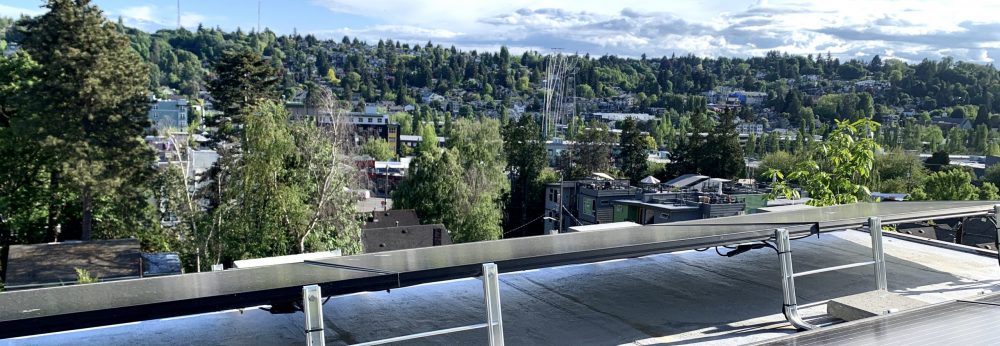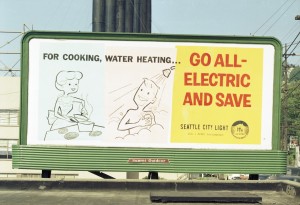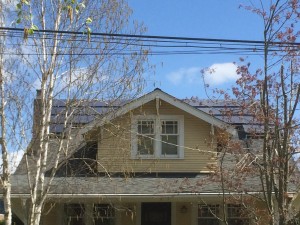by Paige Heggie, Solar Estimator, info@paigeheggie.com
Imagine a little emerging town called Los Angeles in the 1800s. Olive trees line the streets, horse drawn carriages bring burlap-ed ice blocks to old iceboxes, and rooftop metal pipe system provides hot water to your home. “Sunshine, like Salvation, is free” was a motto of the early solar thermal companies.
Using the knowledge that the sun can heat metal, pipes were placed in the sun’s path 100+ years ago to provide heated water options. One Los Angeles company, Night and Day Solar, perfected a temperature regulated distribution by adding tanks to these early systems. Solar thermal (or solar hot water) is not the same as solar electric, but the concept is similar: that is, use what we have, because as they advertised back then “sunshine is free!”
In the mid 1900’s, cheap natural gas as well as coal-fired electricity, interrupted the wholesale adoption of solar thermal.
In the Pacific Northwest, utilities built huge hydroelectric dams to harness and sell energy cheaply.
While the solar hot water companies of the early 20th Century were petering out, scientists worldwide were researching ways to catalyze materials with sunlight to create electricity. Both by accident and on purpose, photovoltaic technology was being formulated into the efficient, useful technology that it is today. In 1905, Albert Einstein pioneered the discussion of the photo electric effect, and his work in that field won him the Nobel Prize in Physics in 1921. The aspirations to create “photo voltaic” energy (meaning “light power”) were becoming a reality.
Bell Laboratories introduced practical solar cells in the 50’s. Bell Labs was a group of science and technology think tanks that had mushroomed out of Alexander Graham Bell’s invention of the telephone. Due to their work, solar electric panels became commercially available, and over the decades, size, color, and design changes have been made as well.
Solar has experienced many spikes in interest and advancement over the last couple centuries. There is growing awareness of the atmospheric detriment of carbon based energy, and we are no longer insulated from those costs. Solar photovoltaic panels (also known as “solar electric” or “solar PV”) are a simple “plug and play” application that are increasingly favored by governments, businesses, and homeowners.
The basic technology of photovoltaics has been here for 60+ years, and having a time-tested, renewable energy system on your property is easier than ever. Just remember: the sun, “like Salvation”, is free!
Sources:
-The Integral Passive Solar Water Heater Book
-A Golden Thread : 2500 years of Solar Architecture and Technology by K. Butti and J. Perlin
-Wikipedia – various.


